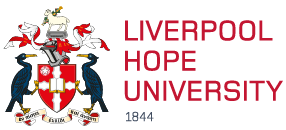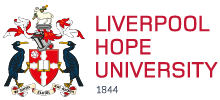The fascinating lives of stewards on board infamous American airline Pan Am have been laid bare in a revealing new book.
From misbehaving celebrities to pilots being spiked with laxatives, there’s more to the so-called ‘Golden Age’ of air travel than you might expect.
The first-hand experiences of Pan Am employees come in a new book, Food and Aviation in the Twentieth Century: The Pan American Ideal, by Dr Bryce Evans, Associate Professor in History at Liverpool Hope University.
He says Pan Am, which operated from 1927 to 1991, invented the idea of luxury air travel and became a byword for US power and influence. Founded by forward-thinking Juan Trippe, Pan Am also pioneered the art of mass travel on large aircrafts, becoming the launch customer for the legendary Boeing 747 in 1970.
And behind the expensive opulence and airline food that wouldn’t look out of place in the fanciest French restaurant it was the airline’s proud stewards who made things tick.
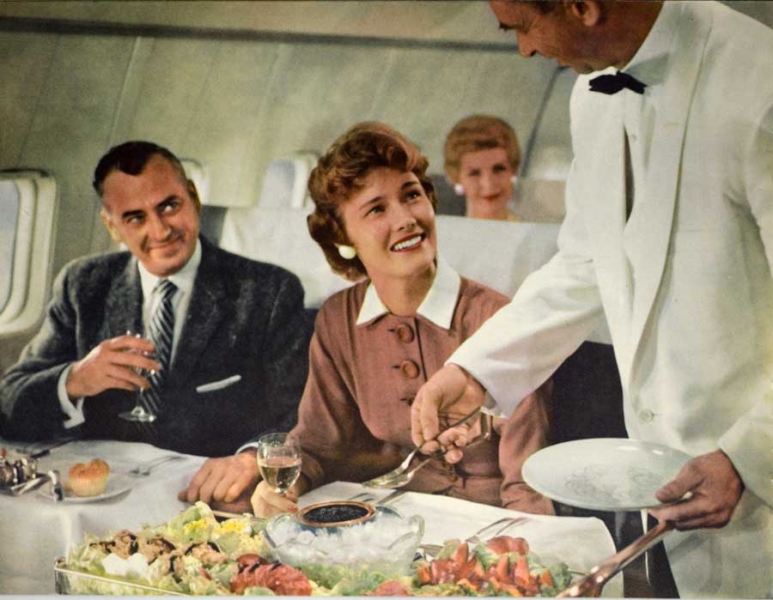
Dr Evans says: “Pan Am represents the elite, carefree Golden Age of air travel - embodying the razmataz and excitement of getting on a plane, particularly in the era of pre-mass travel.
“Pan Am was the vanguard of American global appeal, especially in the context of the Cold War, where it became a tool of soft power for the Government.
“And a huge part of the appeal was Pan Am’s proud, professional flight attendants and the food they served to passengers.
“At one point in the late 1950s even economy passengers could expect dishes such as stuffed guinea hen served on a plate with entrees and finished with a garnish of parsley.
“In first class you could expect caviar and eggs cooked to order.
“Meanwhile the President Special menu of the 1970s offered a main of sole meunière in a rich brown butter sauce with parsley and lemon, hen marinated in madeira sauce and steak drenched in butter.”
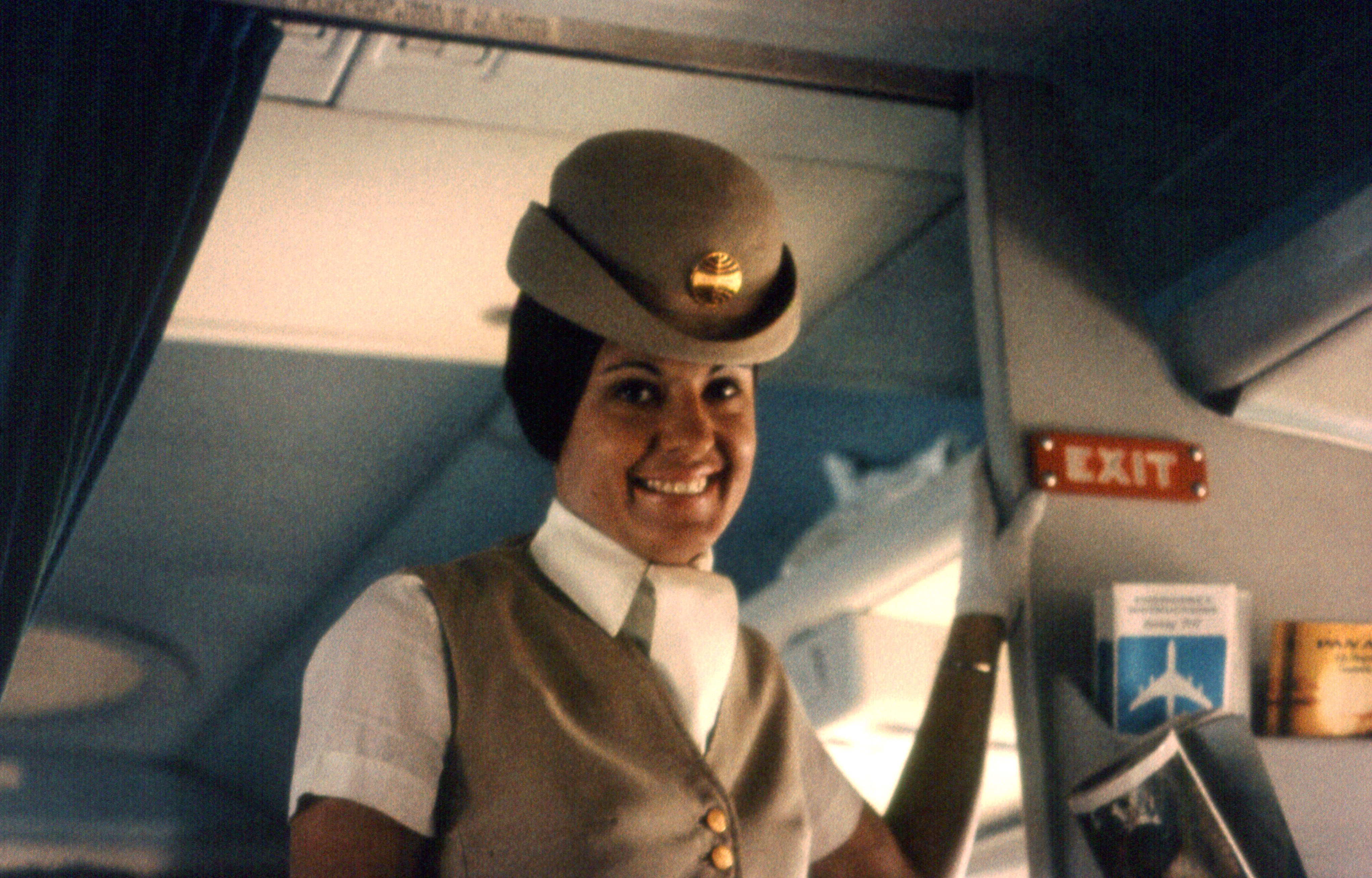
As Dr Evans points out, it’s a far cry from some of the fayre served-up seven miles high right now.
In 2018 and as part of his research for the book, Dr Evans visited Miami, Florida, once home of Pan Am’s HQ, where he spoke with former stewards - who served him a typical Pan Am ‘in-flight’ meal.
He laughs: “When I met some of these women, now in their 70s and 80s, they were kind enough to recreate a Pan Am dinner for me, in their uniforms. I went to a quiet suburban home that was set up to be a plane. There were some real ‘Louis Theroux’ vibes to the experience!
“I was received at the door by a stewardess who gave me a ticket, and then I was seated in the ‘Departures Lounge’ - ie, the settee. And when we were ready to ‘board the plane’, we took our seats at the table.
“All the bone china crockery was beautifully designed and Pan Am authentic, with silver knives and forks, tablecloths and flowers.
“And the thing that stands out for me isn’t just the amazing chateaubriand tenderloin of beef, it was the pride these women still had in their work. The craft and guile of the stewards is legendary. They had the attitude where they could find a solution for everything.
“During the course of our conservations we spoke about everything from sex and partying to drugs smuggling, describing how marijuana was often hid in the ribbon of a stewardess’ hat.
“These are worldly-wise people, so to hear their stories was incredible.”
Here Dr Evans charts some of the stand-out tales, while also revealing some of the key moments in Pan Am’s history.
Celeb turns relationship counsellor:
Not all famous faces proved so tricky. Former stewardess Donna Valdes told Dr Evans how the Oscar-winning actor Sidney Poitier, now 93, had turned relationship saviour mid-flight.
Dr Evans: “Sidney Poitier asked her why she looked so glum. She explained that she had had an argument with her boyfriend, who happened to be the purser aboard the flight. Poitier stopped eating, placed his plate to one side and rose from his seat, calling over the purser and performing some impromptu relationship counselling to them both. Many stewards also aver that the worst behaved and most entitled passengers were not in fact celebrities or VIPs but travel agents.”
Egg filled bras:
Helen Davey, a flight attendant between 1965–86, revealed how cooking hundreds of eggs to order proved tricky during flights hit by turbulence.
She told Dr Evans: “Bouncing up and down, I was determined to cook those stupid eggs perfectly, against all odds. Somehow, my fellow flight attendants and I got into a ‘zone’ and we managed, row after row, to deliver beautiful, fluffy scrambled eggs and sausages. Each dish was topped off by one bright green sprig of parsley, otherwise known as ‘Pan Am roses,’ because no meal was considered complete without it. My fellow flight attendants and I felt extremely gratified when several passengers made a special trip back to the galley to tell us that it was the most delicious meal they had ever had on an airplane! I must have been one sorry sight when I got off the airplane on that beautiful, bright and hot summer morning. I couldn’t cover myself up with my overcoat because it was too hot. Eggs encrusted my hair, my uniform, my shoes, and my purse. The feeling of satisfaction, however, is something I’ve never forgotten. My crew and I had found a way to bring order from chaos, and those eggs had not defeated me, even though a referee might call it a draw: when I arrived at my hotel room and undressed, I had scrambled eggs in my bra!”
Bullying pilots put in their place:
Dr Evans: “Many former flight attendants recall the dislike they felt towards pilots who viewed themselves as ‘Sky Gods’ and who would complain and occasionally sulk if they did not get the food they had requested. One remembers being so upset with one notorious pilot’s persistent bullying attitude that she plotted different ways to give him his comeuppance. Eye drops were in plentiful supply at the time because when smoking was permitted on airplanes flight attendants would have to walk back and forth through a confined space full of thick smoke clouds, which made the eyes burn and made the eye drops a travel essential. Therefore, on one occasion, after suffering what she considered an unfair reprimand, she secretly added her eye drop mixture to the pilot’s coffee, which had a strong laxative effect.”
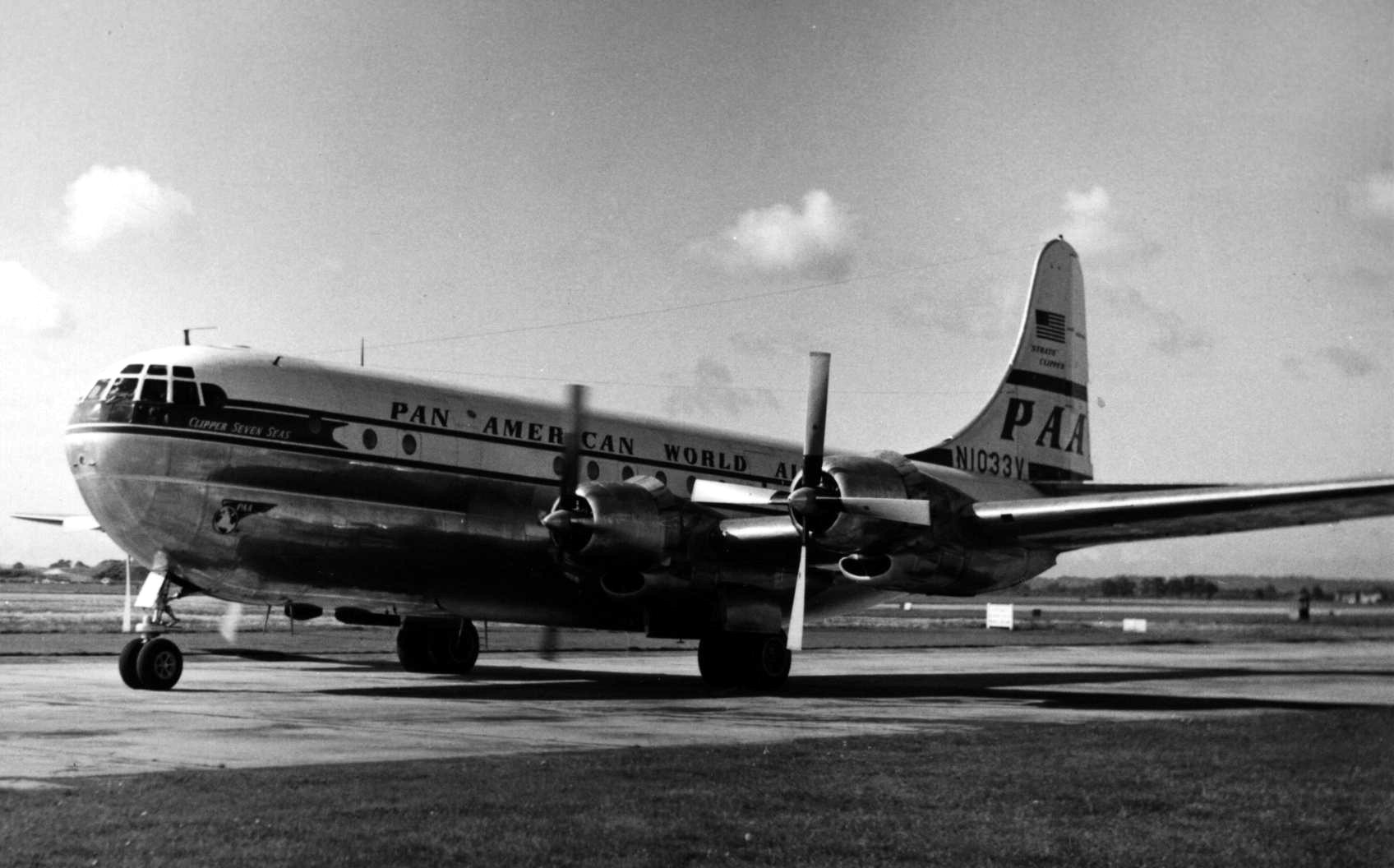
Why the tale of pilots and co-pilots not eating the same meal is no myth…
You might have heard apocryphal stories of pilots and co-pilots refusing to eat the same meal, to stop them both being stricken with food poisoning, and assumed it was a myth.
Yet Dr Evans says the importance of having the pilots eat different dishes is illustrated by a serious outbreak of food poisoning on board a Pan Am flight between Copenhagen and New York in 1970.
Former stewardess Joan Nell Bernstein revealed: “Everyone got sick from the shrimp cocktail. Everyone was vomiting uncontrollably – crew, passengers – the entire plane was plastered in sick and the toilets were an absolute mess.”
Dr Evans adds: “The plane was met at John F. Kennedy airport by an array of ambulances and fire engines. Thankfully, as per protocol, one of the pilots had not eaten the shrimp cocktail that day.”
The dark underbelly of Pan Am:
Despite the glitz and glamour, Pan Am’s attitude towards women was problematic to say the least. Not only were they subject to regular weight checks, they were also hired and fired based on their appearance.
One document from the 1960s uncovered by Dr Evans revealed how applicants could be turned down for being plain, unattractive, divorced, ‘has child’, ‘cold, passive’, ‘too much eye makeup’,‘dumpy – head too small for body’, ‘judo handshake’, while applicants were favoured for being ‘homely’, ‘lady-like’, ‘a pretty girl, pleasant’ or ‘friend of company executive’.
Dr Evans adds: “It’s the Janus-faced nature of Pan Am - on the one hand you had this ‘body beautiful’ Golden Age, but on the other hand they were treating people like meat. When I mentioned this to them, none had an issue with the conditions and none felt oppressed. Yet very few lasted a year or more in the profession and many married wealthy passengers or pilots. It perhaps reflects the standards of the age and while I found it quite sad, none of them had a shred of regret that they didn’t have a longer career.”
The stewardesses hated being ‘sexualised’:
Dr Evans: “After speaking with the former Pan Am employees, they were all disappointed at how sexualised the image of the stewardess had become in popular culture. There was real frustration there, and they wanted to emphasise the professionalism of the job, and how it wasn’t about sexy girls in tight uniforms. In this respect Pan Am was a cut above. Some of the other airlines at the time had stewardesses in hot pants. But Pan Am never cheapened itself in that way. Instead at Pan Am there were lengthy memos about how to correctly serve bread rolls with a fork and tongue. It was also illustrative of the type of passenger they used to carry. And the stewards were all glad that they received such a high degree of training - including in the provenance of different wines, how the wines complemented certain dishes, and the regions of the world they came from. It pre-echoed the world today when people are obsessed with the authentic and the local. Pan Am was doing this year’s before it became so trendy.”
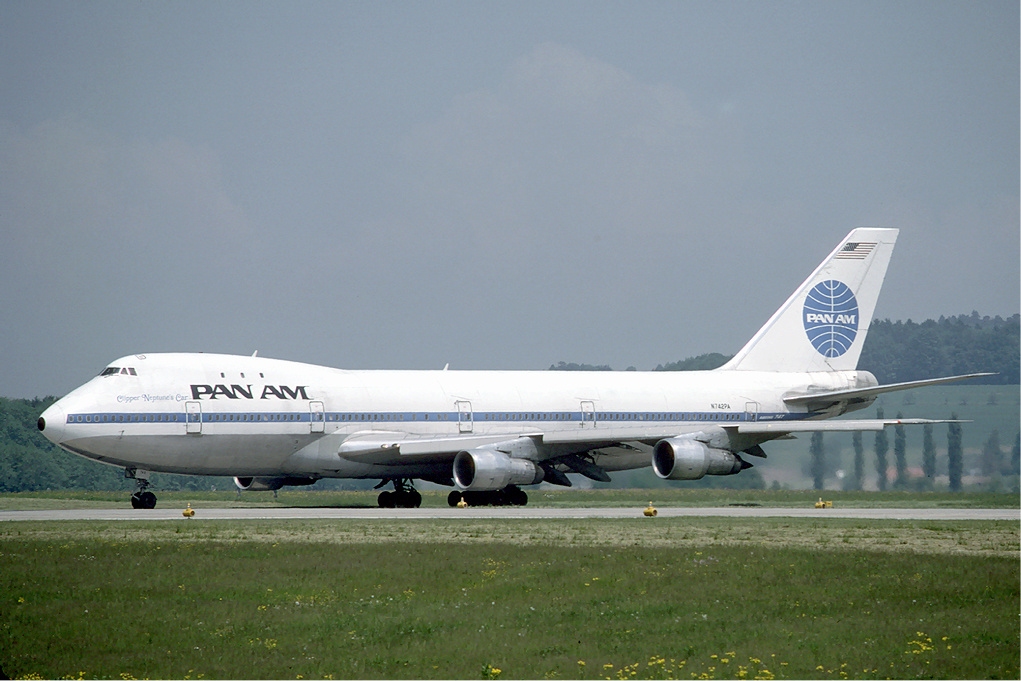
The demise of Pan Am
In the end, Pan Am suffered an inglorious end - declaring bankruptcy in 1991. Dr Evans says that despite opening up global travel to the masses, it was a firm wedded to an elitist – and at times orientalist, archaic and faintly racist – notion of food service and food servers.
The final nail in the coffin came in 1998 when Pan Am Flight 103 was exploded by terrorists above the Scottish town of Lockerbie, killing 243 passengers and 16 crew, as well as 11 people on the ground.
Yet nostalgia for the brand lives on. Dr Evans explains: “Talking to staff some 30 year after Pan Am’s demiset, I got the impression that many of them are still in shock. They question how this could have been allowed to happen, how an American institution could be allowed to die? But under the form of American capitalism that the company embodies, you live by the sword and you die by the sword. And by that stage the market had shifted to such an extent that they were just bloated and expensive. They tried not to compromise, they didn’t want to be ‘no frills’. But the model was just uneconomic by the time that it died.”
** Food and Aviation in the Twentieth Century: The Pan American Ideal, by Dr Bryce Evans, is published by Bloomsbury and is released December 10th.
